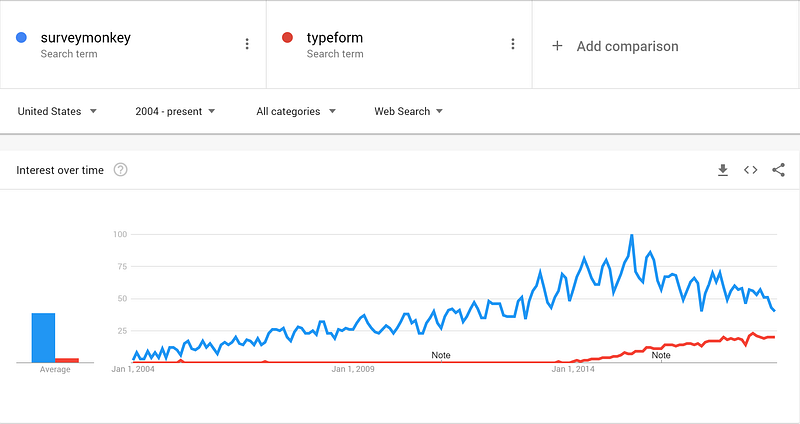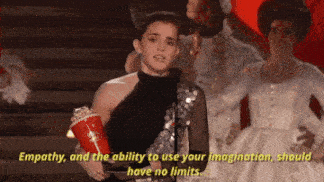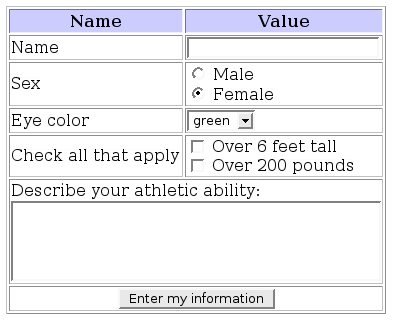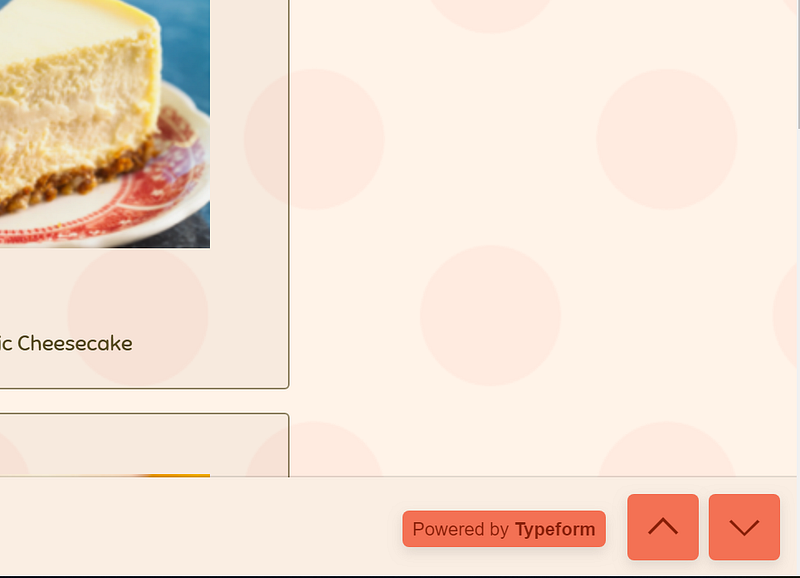Typeform : Transformer les formulaires en conversations humaines
Produits emblématiques Épisode 009
Avant de commencer, un disclaimer : j'utilise Typeform et je l'adore. 😍

Nous utilisons Typeform depuis un certain temps chez Salesflare et je ne voudrais pas utiliser un autre logiciel d'enquête avec nos clients.
J'adore le fait que l'expérience soit tellement meilleure qu'avec n'importe quelle application concurrente. L'utilisation de Typeform rend l'interaction avec Salesflare un peu plus humaine, ce qui est quelque chose que nous apprécions énormément. ❤️
Typeform humanise les relations avec nos clients.
Malgré tout, je n'ai jamais pu déterminer concrètement comment ils y parviennent. Pourquoi aucune autre application ne semble être comparable. Et comment Typeform conserve cette avance depuis toutes ces années. Pourquoi personne ne les devance ?
Je me suis donc lancé dans notre neuvième quête des produits emblématiques, en cherchant à savoir ce qui rend Typeform si emblématique.
Allons-y 👇
Rendre les choses un peu plus humaines
L'idée de Typeform a germé lorsque les fondateurs ont conçu un formulaire de demande d'information destiné à être utilisé dans un espace d'exposition. Vous savez, ces choses qui attirent vos données.
Ils voulaient faire mieux que ce qu'ils avaient vu auparavant. Au lieu de construire un formulaire standard, ils voulaient créer quelque chose qui attirerait vraiment l'attention des gens et les interpellerait.
Ils ont constaté un manque d'empathie dans la manière dont la plupart des entreprises demandaient des données. Passer d'une conversation en face à face à des formulaires en ligne semblait être un grand pas. Les gens écrivaient encore dans des cases et cliquaient sur des petits boutons, ce qui ne semblait pas être une expérience très humaine. 🙄
Inspirés par le film "War Games", dans lequel le personnage principal a une conversation dactylographiée avec un ordinateur central, ils ont pensé qu'ils pourraient créer un formulaire qui ressemblerait davantage à une conversation.
 L'inspiration pour Typeform : War Games. Vous le voyez, ou pas ? 😏
L'inspiration pour Typeform : War Games. Vous le voyez, ou pas ? 😏Ils ont cherché à créer quelque chose de plus agréable que de remplir quelques cases. Ils voulaient supprimer la barrière entre les humains et les ordinateurs.
Des années plus tard, ils ont résumé cela dans la déclaration de vision de Typeform :
Rendre les choses un peu plus humaines.
Typeform pense que les formulaires ne servent pas seulement à collecter les données dont vous avez besoin, mais aussi à contrôler l'impression que vous laissez. Ou comme ils ont tendance à le dire : "La façon dont vous demandez est tout". 🤯
Typeform privilégie l'expérience humaine aux données
L'ADN d'une entreprise commence le plus souvent avec ses fondateurs.
Dans le cas de Typeform, la façon préférée des cofondateurs de passer une journée est de concevoir. C'est là qu'ils font vraiment circuler leur énergie. 🤩
Son principal concurrent et leader du marché, SurveyMonkey, est par ADN une société d'analyse de données. Typeform est différente. Il s'agit d'une entreprise d'interface utilisateur.

Il est évident que l'équipe s'intéresse aux données. Sinon, elle ne créerait pas de logiciel qui recueille des données. Mais ils ont une mentalité "les gens d'abord, les données ensuite".
Ils croient en la nécessité d'être "informés par les données, plutôt que guidés par les données". Cela signifie qu'ils reconnaissent le pouvoir des données, mais qu'ils n'abandonneront jamais complètement leur intuition.
Il s'agit de concilier la perception du client et les taux de conversion. Équilibrer les sentiments et les faits. L'intuition et les mesures.
Typeform privilégie la conception empathique à la conception axée sur les données.

L'équipe de Typeform dit parfois qu'elle travaille sur l'expérience humaine et non sur l'expérience utilisateur. L'expérience humaine, pas l'expérience utilisateur.
L'UX consiste à amener une personne d'un point A à un point B avec succès. L'HX va plus loin. Il pose la question suivante : ont-ils atteint le point B avec une connexion émotionnelle ?
L'équipe de Typeform pense aux humains. De vraies personnes. Quels sont leurs besoins ? Leurs émotions ?
Il faut réfléchir à qui est vraiment l'utilisateur. Se rapprocher d'eux. Les comprendre. 🤗
À cette fin, Typeform effectue de nombreuses recherches auprès de ses clients. Et ce n'est pas seulement l'équipe produit qui teste constamment de nouvelles idées sur les clients. L'équipe go-to-market s'efforce également de se rapprocher des clients, de comprendre où se situe la valeur de Typeform, ce qu'ils veulent vraiment.
En fin de compte, c'est le lien émotionnel qui fait que les gens tombent amoureux d'un produit. ❤️
La conception de Typeform est le résultat d'une attention constante
On dirait que les gars de Typeform sont de vrais génies, non ?
Bien qu'une partie du succès du logiciel puisse être attribuée à l'intelligence et à des choix judicieux, il est probablement plus le résultat d'une concentration extrême. Il s'agit d'investir sans relâche du temps et des ressources dans un objectif clair.
Ce que vous voyez aujourd'hui lorsque vous remplissez un formulaire Typeform est le résultat d'une obsession pour des centaines de petits détails sur une longue période de temps. L'équipe a travaillé sans relâche pendant de nombreuses itérations, s'occupant des moindres détails de l'interaction avec le formulaire, un par un.

En se concentrant constamment sur la facilité d'utilisation, la touche humaine et la beauté du design, Typeform a réinventé quelque chose qui existait depuis des décennies. Et ils ont continué à le perfectionner et à l'étendre pour maintenir son caractère unique.
Et cela a bien servi Typeform. Dans un marché saturé comme celui des logiciels de formulaires, il aurait été vain de rivaliser en copiant ce qui existe déjà. Au lieu de cela, Typeform a produit quelque chose que les gens voulaient et qu'ils n'avaient pas encore : une belle façon de construire des formulaires attrayants.
Ils nous donnent des formulaires qui ne ressemblent pas à des formulaires
Mettez votre main en l'air si vous aimez remplir des formulaires...
Oui, je ne le pensais pas. 😏
Nous avons tous besoin de communiquer des données, mais nous n'aimons pas les formulaires. Nous voulons des formulaires qui ne donnent pas l'impression d'être des formulaires.

Voici comment rendre les formulaires plus humains.
Un à la fois
Typeform divise l'interface du formulaire en éléments plus petits. Vous ne voyez pas une grande liste de questions, mais seulement une à la fois, ce qui permet d'avoir un flux naturel de choses à venir.

Cela le rend plus facile à gérer, plus motivant et permet aux gens de s'impliquer davantage.
Des polices plus grandes pour des conversations plus humaines
Une seule question à la fois permet d'utiliser plus d'espace sur l'écran.
En outre, l'utilisation de polices de caractères beaucoup plus grandes que le formulaire moyen encourage les créateurs de formulaires à formuler des questions plus directes et plus humaines. Et les personnes qui remplissent le formulaire donnent des réponses plus humaines.
Pas de boîtes, moins de boutons
Écrire dans des boîtes et cliquer sur de petits boutons n'est pas très humain. C'est pourquoi Typeform fonctionne avec une ligne de texte et un curseur. Une question et une possibilité de réponse. C'est tout.

Vous aimez vraiment les boutons ? Ils le montreront. Mais si vous ne voulez pas toucher à votre souris et utiliser votre clavier, c'est tout à fait possible. Il vous suffit d'appuyer sur "Entrée" ou sur l'une des touches de raccourci indiquées à côté de la réponse.
Au-delà du texte
Une forme habituelle est une grande feuille de texte, demandant plus de texte.
Typeform vous permet de construire facilement des formulaires avec des icônes, des images, des gifs et des vidéos. Cela rend les choses plus visuelles. Et encore une fois, plus humain.

Typeform se développe grâce à la viralité et aux intégrations
Comme tous les produits qui se développent à la vitesse de la lumière, ses mécanismes de croissance sont particuliers et inhérents à l'utilisation principale du produit.
1. Croissance virale : chaque formulaire envoyé est une publicité pour Typeform
Les gens envoient des formulaires aux gens. Ces formulaires sont magnifiques. Et ils contiennent une subtile mention "Powered by Typeform".

C'est aussi simple que cela, mais ce bouton équivaut à 50% des inscriptions de Typeform. 🚀
2. Intégrations : les gens restent si Typeform fait partie d'un flux de travail.
Les intégrations sont excellentes pour la rétention de Typeform. Si vous n'envoyez une enquête qu'une seule fois, vous n'aurez peut-être plus besoin de Typeform par la suite. Et vous pourriez finir par arrêter votre abonnement. 🛑
Dès que vous intégrez des formulaires dans un flux de travail, tout change. Vous ne pouvez pas cesser d'utiliser Typeform. Cela nécessiterait de remplacer le formulaire ou même d'arrêter l'ensemble du flux.
C'est pourquoi Typeform a passé beaucoup de temps à développer ses intégrations avec MailChimp, Google Sheets, Zapier, ... et pourquoi il vous permet d'intégrer des formulaires dans n'importe quel site web.

3. L'image de marque : les gens ne choisissent Typeform que s'ils ont l'impression qu'il est différent.
L'équipe de Typeform a consacré énormément de temps et de ressources à la compréhension et à la redéfinition de son image de marque. Puis à refaire tous les designs.

Elle veut s'assurer que les gens comprennent le côté humain de l'entreprise et la manière dont elle rend les formulaires plus humains. De cette façon, ils veulent se développer au-delà d'une simple entreprise de logiciels. 🦄
Et ils veulent aussi commencer à communiquer clairement sur l'autre chose que Typeform veut dépasser : être uniquement sur les formulaires.
Typeform veut aller au-delà des formulaires
Dès le début, les fondateurs de Typeform ont eu pour objectif de rendre la communication plus humaine.
Ils ont commencé avec des formulaires et se sont appelés Typeform. Aujourd'hui, ils veulent aller plus loin.
Ils essaient de ne plus être perçus comme un outil de formulaire ou d'enquête, mais comme un outil de communication. Ils s'efforcent de ne plus être perçus comme des outils de communication, mais comme des outils de communication humaine en général.
Pour l'instant, vous pouvez utiliser Typeform pour organiser des enquêtes, des formulaires de retour d'information, des quizzes, des histoires interactives, ... mais ils visent bien plus grand. 🔭

Typeform vous permet d'avoir une conversation à travers une interface. Vous pouvez fournir des données et connecter des données avec Typeform. Vous pouvez créer des flux de travail.
Les gens devront toujours collecter des informations auprès d'autres personnes. La question est de savoir comment ils le feront. Cela ne se fera pas toujours par l'intermédiaire d'un navigateur ou d'un formulaire. L'équipe étudie déjà la possibilité d'utiliser l'IA, la RV et la technologie vocale. Organiser et transcrire automatiquement les conversations.
Typeform s'attache à créer des interfaces conversationnelles et à déterminer comment elles vont remplacer les interfaces traditionnelles de type "pointer et cliquer".
Et ils ne s'arrêteront pas tant qu'ils n'auront pas atteint leur plein potentiel. 🙌
Bonus : Typeform... un nom qui en dit long ?
Vous êtes-vous déjà demandé ce que signifiait le nom Typeform ? 😏

Selon son cofondateur, David Okuniev, il s'agit de.. :
- La possibilité de taper dans le formulaire sans toucher à la souris
- Le fait qu'il s'agisse d'un autre type de formulaire
- L'importance de la typographie dans leur produit
Envie de découvrir d'autres produits emblématiques ? Lisez toute la série ici ! 📲
Nous espérons que cet article vous a plu. Si c'est le cas, passez le mot !
Pour en savoir plus sur les startups, le marketing de croissance et les ventes :
Dernière mise à jour :
- 7 Best CRMs for Mac in 2025 - septembre 19, 2025
- 7 Best HubSpot CRM Alternatives in 2025 - 17 septembre 2025
- 7 Best Pipedrive Alternatives in 2025 - septembre 16, 2025